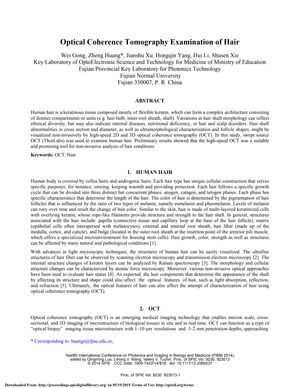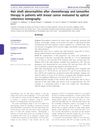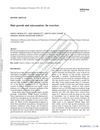Optical Coherence Tomography Examination of Hair

TLDR OCT can effectively examine and reveal details about human hair and scalp conditions.
The study utilized high-speed 2D and 3D optical coherence tomography (OCT) to non-invasively examine human hair, revealing that OCT could effectively visualize hair shaft abnormalities, cross sections, diameters, and follicle shapes. Preliminary results indicated that swept source OCT (ThorLabs) was a promising tool for analyzing hair conditions, potentially reflecting ethnical diversity, internal diseases, nutritional deficiencies, or hair and scalp disorders.




